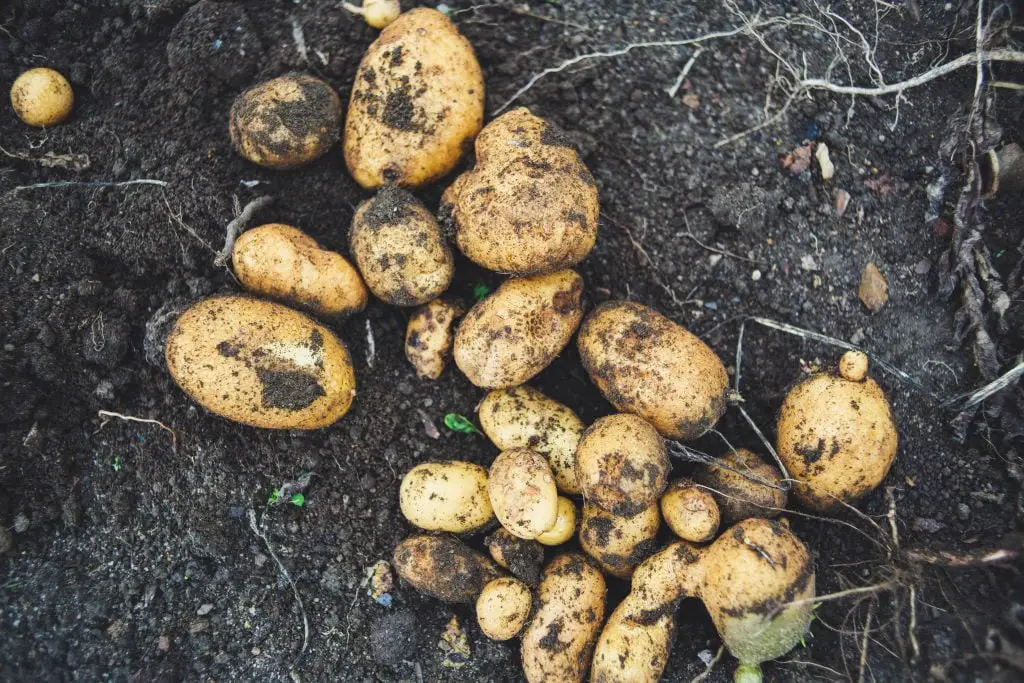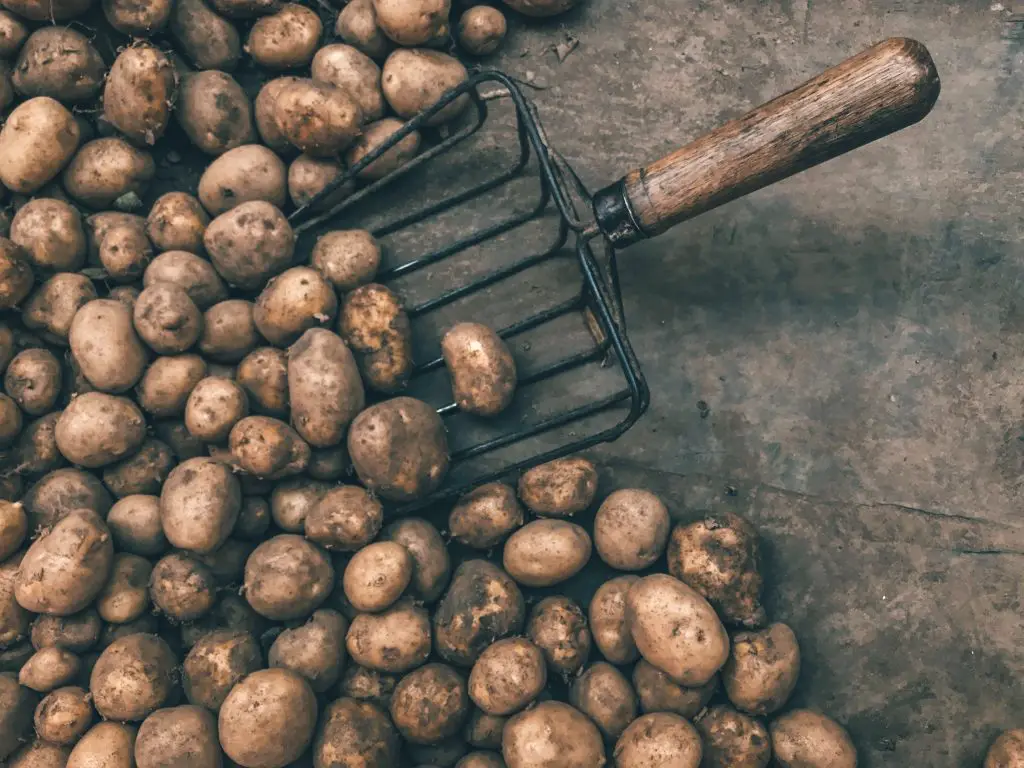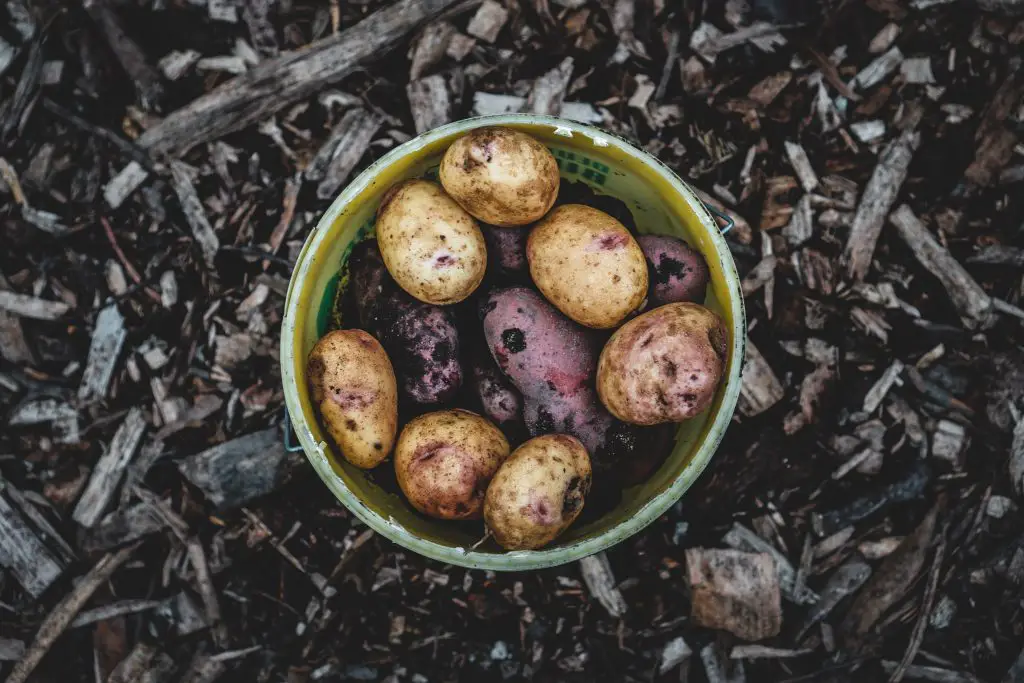Can I Plant Store Bought Potatoes? With the volume of potatoes purchased from the store have you ever wondered whether it is possible to grow your own of the potatoes purchased from the store? Or is it necessary to purchase certified potatoes from your local garden center?
Store-bought potatoes can be sown to produce a new crop of Potatoes, however, they are not as reliable as certified Seed Potatoes. The two main reasons for this are many store-bought potatoes are treated with a sprout inhibitor called Chlorpropham, which reduces the potential for the Potatoes to sprout. The second reason, but a significantly more important one, is that there is a greater risk of introducing diseases into the soil. Most countries around the world have bodies that certify Potatoes; these bodies exist for a reason.
However, if you are concerned about the introduction of disease the risk can be eliminated by growing the potatoes in a container or pot. The soil can be disposed of at the end of the season into green waste.
What Kind of Diseases Can Be Caused By Planting Store Bought Potatoes?
However, if you choose to plant seed potatoes, the obvious question is what issues may you encounter? Potatoes can suffer from a range of diseases, caused by the presence of certain types of bacteria. The bacteria commonly causes soft rot diseases that can remain in both Potato plants and tubers, without any obvious symptoms.
The symptoms of the soft rot bacteria can sometimes only become obvious when the Potato is damaged by either bruising or cutting. The type of diseases that can be caused by the bacteria include Wilt, Black Dot, and of course Blight, which is a particular problem in the UK.

Why Do We Pay More Money For Certified Seed Potatoes?
Certified Seed Potatoes Schemes exist to limit the spread of common diseases, by ensuring that the seed stock provided for further multiplication of Potatoes has been tested, and found to be free of these diseases. The scheme run in Australia by Ausveg, tests for the presence of 14 different diseases, and requires growers to maintain strict hygiene practices in order for them to be able to be labeled as ‘certified’.
To buy Seed Potatoes, if you live in the US go to Seeds Now as they have over 30 different potatoes available. If you live in the UK one of the biggest ranges can be found at Thompson & Morgan. One variety offered by both sites which I personally recommend is King Edward it is a lovely variety that produces a good yield.
How to Grow Potatoes Using Store Bought?
If you choose to grow Potatoes using store-bought tubers, there are a few things that you can do to reduce the chance of having problems with disease. Firstly, to ensure that any Potato planted will actually produce a crop, it is recommended that Potatoes are washed and dried, then stored in a dark area for an extended period. Occasionally, check them for signs of sprout formation, as this is a sign that the effects of the sprout inhibitor are waning.
The most common sprout inhibitor used Chlorpropham, has been the subject of many studies. These studies indicate that it degrades quite slowly in the environment. In a study published in The Journal of the American Chemical Society in 2001, Chlorpropham was detected on the surface of the Potatoes after 100 days, despite being washed. It was also detected after potatoes were boiled.

If the concentration of the sprout inhibitor is too high when the Potato is planted, the harvest will either be significantly reduced or non-existent. Slow germination provides a greater opportunity for the Seed Potato to rot.
The risk of problems may be reduced, by delaying the sowing of Potatoes by a few weeks. This will allow for the soil to warm up a little more, encouraging faster growth and less opportunity for the tuber to rot. Additionally, it is also recommended that Potatoes be planted whole, as cutting the tuber provides an easier access point for any bacteria.
In a prior article, we reported on experiments conducted in our trial garden demonstrating that there was a significant benefit associated with cutting seed potatoes in half. These results also demonstrated the increased susceptibility of rot when seed potatoes were cut. Click on the link here for further details.
How to Grow Potatoes?
Potato seeds are best planted in early Spring, when the soil is beginning to warm up. They can be planted around two weeks prior to the last frost in trenches that are approximately 30 cm deep. Potatoes prefer rich soil, with a pH between 6.0 and 7.0. To read more about the pH of the soil and how to adjust it click on https://planyourpatch.com/why-is-ph-important-in-soil/.
Prior to planting it is recommended that plenty of compost and manure be added to the trench at the time of planting. The Potatoes should be planted approximately 12 to 14 inches (30 to 40 cm) apart, and the trench should be partially backfilled.

Plants will emerge approximately 2 to 4 weeks later. As the plants get larger, soil or mulch should be mounded up around the stems. This process will allow the Potato to produce tubers at many points along the stem, maximizing the yield. Additionally, this process is important to ensure that the developing tubers are not exposed to light, as they will turn green and become poisonous.
Potatoes should be harvested around 4 weeks after flowers appear on the plant at the earliest. The timing of the flowering can be accelerated by chitting the Potatoes prior to planting. For additional information on the benefits of chitting, click the link here.

For each Seed Potato planted, you can expect to get between 0.5 kg to 2kg (1 to 4 lbs). The size of the yield is dependent upon the length of time the Potatoes spend in the ground, and the variety being grown. However, once the foliage begins to die back, the size of the yield will not increase further.
First and Second Early Potatoes, generally provide smaller yields but provide earlier harvests. They are ready to harvest in 10-14 weeks and require much less space than the main crop Potatoes. Main Crop Potatoes take about 15-20 weeks and will produce a much larger harvest. The main Potatoes produced generally store better than First and Second Early Potatoes providing access to Potatoes throughout the winter. For additional information on the best varieties to grow, click the link here.
Related Articles
Can You Cut Seed Potatoes in Half?
Can I Plant Store Bought Potatoes?
What Are The Best Potatoes To Grow In Bags?
Can You Plant Old Potatoes That Have Sprouted?
Does Earthing Up Potatoes Improve Yield? Is It Worth Doing?
How Much Sun Do Potatoes Need? Does The Yield Fall In Shade?
Are Potatoes A Root Vegetable?
How Late Can You Plant Potatoes? (And How To Maximize The Yield)
Can You Compost Potatoes? Or Will They Start Growing?
